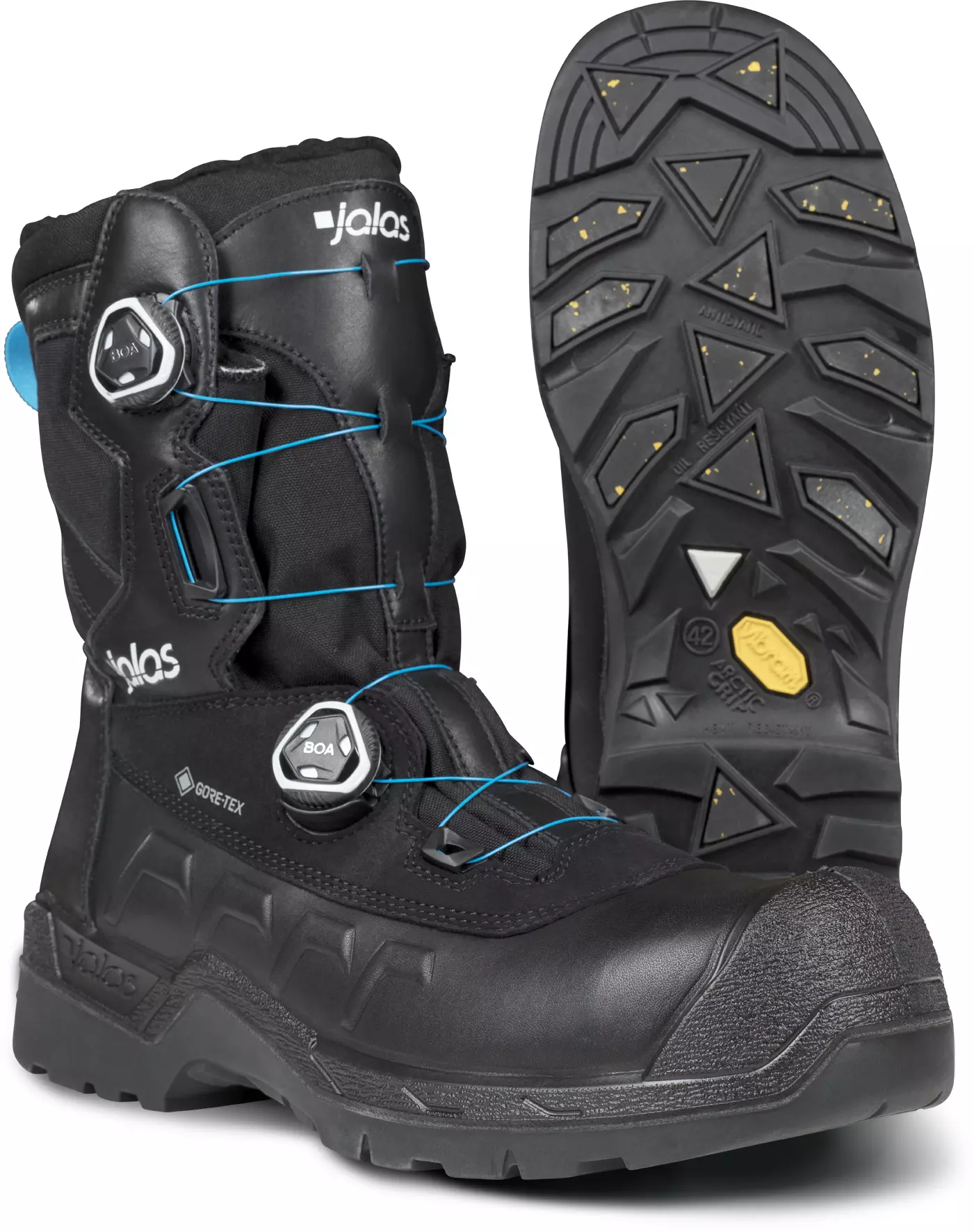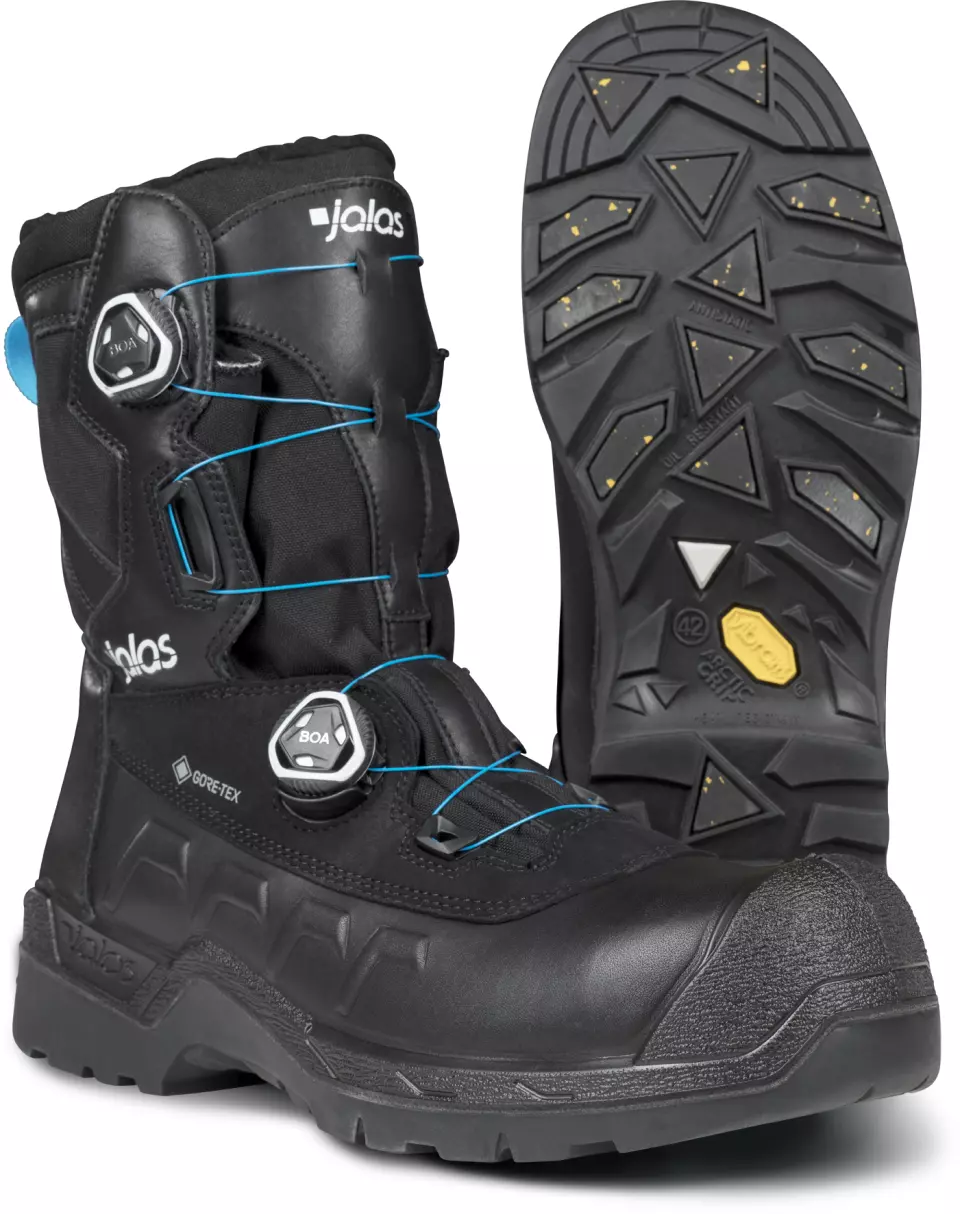
Features You'll Love

Toe Cap Material · Composite
EN ISO 20345 · WR, S3
The material used in the protective toe cap, determining the level of impact protection, weight, and suitability for different work environments.
This footwear is water-resistant, meaning the entire shoe protects against water penetration, not just the upper material. It is designed with features like sealed seams or a waterproof membrane to keep your feet dry in wet conditions.
Provides 200-joule impact-resistant toe protection, a closed heel, antistatic properties, and energy absorption in the heel. Also features a water-resistant upper, a penetration-resistant midsole, and a cleated outsole for enhanced grip.

Liner Material · Fur, Polyester, Wool

Outsole Properties · Oil Resistant, Anti Slip
Oil-resistant soles ensure secure footing and lasting durability in oily environments.
Anti-slip soles provide superior grip, keeping you safe and steady on challenging surfaces.

Closure Style · Spin Lock
The method used to secure the shoe to your foot, affecting how easy it is to put on and take off.
Jalas
Heavy Duty WINTER Safety footwear
Jalas
Heavy Duty WINTER Safety footwear
4.9 / 5
297,92 €
Choose size
Free delivery
Features You'll Love

Toe Cap Material · Composite
EN ISO 20345 · WR, S3
The material used in the protective toe cap, determining the level of impact protection, weight, and suitability for different work environments.
This footwear is water-resistant, meaning the entire shoe protects against water penetration, not just the upper material. It is designed with features like sealed seams or a waterproof membrane to keep your feet dry in wet conditions.
Provides 200-joule impact-resistant toe protection, a closed heel, antistatic properties, and energy absorption in the heel. Also features a water-resistant upper, a penetration-resistant midsole, and a cleated outsole for enhanced grip.

Liner Material · Fur, Polyester, Wool

Outsole Properties · Oil Resistant, Anti Slip
Oil-resistant soles ensure secure footing and lasting durability in oily environments.
Anti-slip soles provide superior grip, keeping you safe and steady on challenging surfaces.

Closure Style · Spin Lock
The method used to secure the shoe to your foot, affecting how easy it is to put on and take off.
Product description
JALAS Heavy Duty 1398 WINTER GTX, A waterproof safety boot ideal for wet and very cold winters. Uppers made of highly protective surface leather and technical textile for support and protection. GORE-TEX lining and extra warm fur lining keep feet dry and warm. Two BOA® adjusters on the side allow for separate adjustment of the foot and toe. High grip Vibram® Arctic Grip Pro outsole provides excellent traction on wet ice, snow and other slippery surfaces. Composite toe protection and soft textile spike protection.